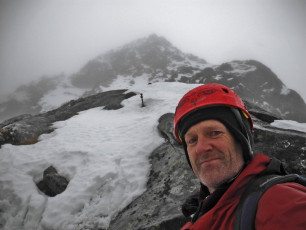
Near our turn around point on Talbot Ladder in July 2014.
The thing is though, we had underestimated both the seriousness of the Darrans and the toughness of the locals who spend a lot of time in there. What is a nice easy route to these guys is a bridge too far for the likes of me – at least if attempted as one outing.
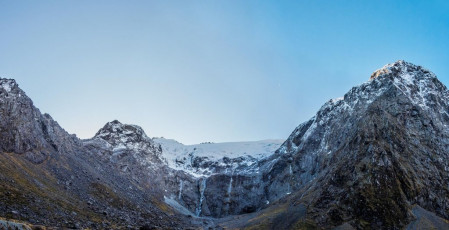
McPherson Cirque. Homer Saddle (1,375m) is the dip on the left, leading right, up Talbot ladder to Mt McPherson (1,931m) - the first snowy pinnacle. On the right is Mt Talbot (2,105m)
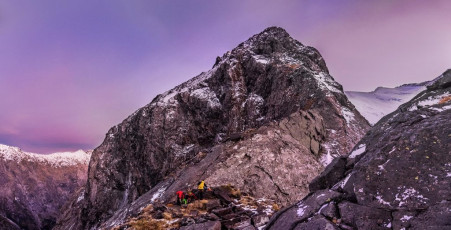
So, fast forward two winters and I was back at Homer Hut with a new climbing buddy, Piotr Nowak, who I met through the 2015 climbing meet. Piotr is a much stronger rock climber than me which, from my last two visits to Talbot Ladder, I knew would be very helpful. This time, unlike the last two, we were also blessed with a lovely weather window.
Piotr and I arrived at Homer Hut on Friday afternoon. With high hopes, we organised all our gear and hit the hay early so we could be away by 6am – two hours before dawn. Our ambitions were now much more realistic than on my first visit. We would just attempt half my original objective – Homer Saddle, Talbot Ladder, Mount McPherson, Traverse Pass, Gertrude Saddle and out. Still a nice circuit, but not requiring any midwinter bivying and permitting a nice bottle of Shiraz back at the hut to finish.
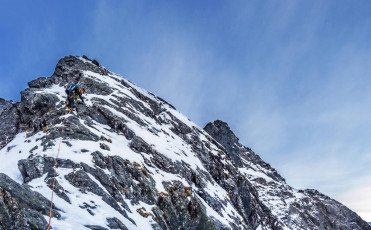
From Homer Hut, it’s just a two or so hour climb to Homer Saddle (1,375m). This time, under torchlight as we scrambled up the boulder field in McPherson Cirque, we encountered zero snow until about 1,450 metres. We arrived on Homer Saddle at dawn. Above, the dawn light revealed iced up rock and unconsolidated snow.
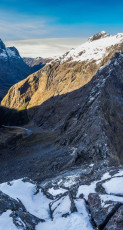
A view back down Talbot Ladder to Homer Saddle, with Mount Belle behind
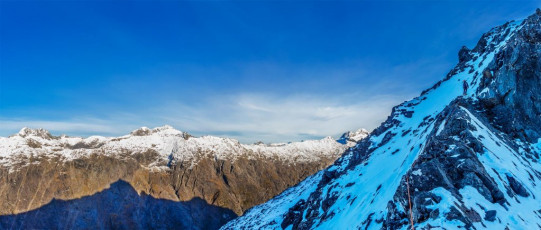
In summer conditions Talbot Ladder is just a steep, exposed rock scramble, but add snow and ice and it required several pitches with yawning drops on both sides before we gained access to the much wider, more gradual snow ridge at about 1,700 metres. This leads to the summit of Mount McPherson (1,931m).
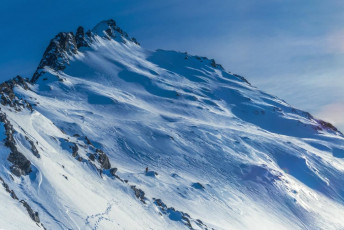
Once above Talbot Ladder we could relax and enjoy the ever more spectacular panoramic views which I had been coveting for three winters. Here is the south ridge and summit of Mount McPherson (1,931m).
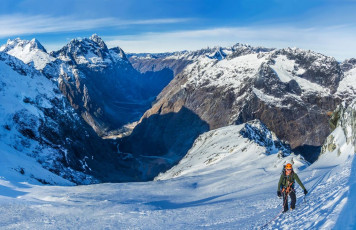
On this lovely calm morning I knew it had been worth the wait. As we cramponed up, we did as Al’s guidebook suggested, keeping to the ridge rather than venturing out onto the snow field which, while it might offer a more direct route to Traverse Pass, conceals crevasses and avalanche danger.
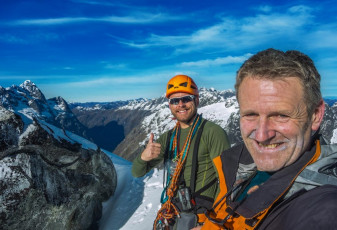
We reached the summit of McPherson about 1.30pm, enjoying a 360 degree panoramic view of precipitous ridges and peaks in every direction. This included our route dropping down and then up again to Traverse Pass (1,987m), just north of Mount Talbot (2,105m). Given the time and the large scale of our surroundings, we debated for a moment whether we should continue on or retrace our steps. Yeah nah. Weather’s great, let’s go for it.
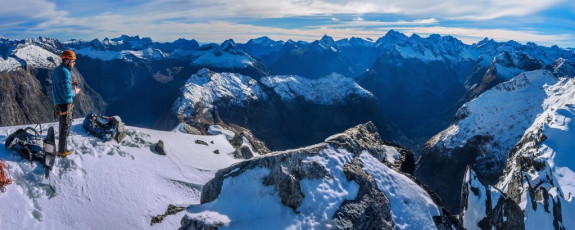
McPherson summit view north and west.
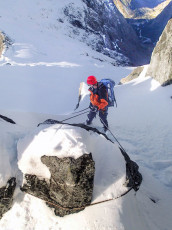
An abseil off the summit followed by a quick drop across a snow field had us thinking our progress would be quicker from now on (this photo Piotr Nowak).
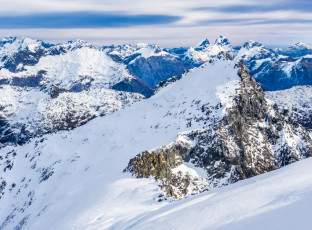
The view beneath Traverse Pass back to Mount McPherson.
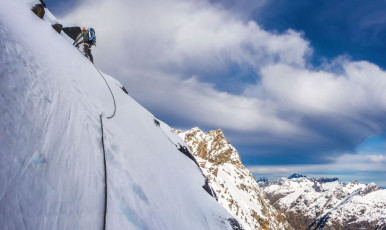
But a steep exposed ramp below Traverse Pass obliged us to get the rope back into action.
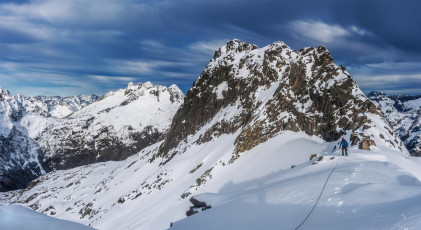
Once on Traverse Pass it quickly became apparent why it is so named. You indeed need to traverse along eastwards to get past cliffs before you can drop down to Gertrude Saddle. Directly ahead here is Mt Talbot (2,105m).

As we descended snow fields on the north side of the Pass the sky began to take on the heavenly hues of a winter sunset. The going was easy until we hit the unseasonably high snowline again. Here the treacherously slippery rocky slabs became much more challenging. By the time we had cleared Gertrude Saddle (1,410m) it was nearly dark.
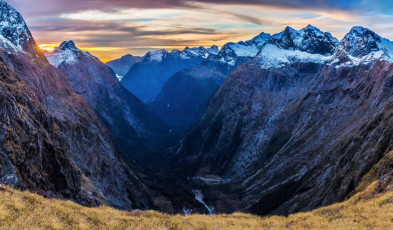
In darkness at the Black Lake we decided it was time to get the crampons off. In the darkness we couldn’t see all the Teflon-slick black ice plastered all over the place. Hanging off the metal cable on a steep section just below the Black Lake was hairy enough, but the slabs below that were diabolical. One moment I was standing and the next flat on my back. Piotr actually took a 15 or so metre slide down the slabs, stopping only when he collided with a large boulder. Hmm, crampons back on!
We were glad to reach Homer Hut two hours after nightfall, having finally completed a circuit claimed by many to be the finest day walk in New Zealand. In summer apparently the whole circuit takes about 8 hours. Our winter effort took 14 hours.
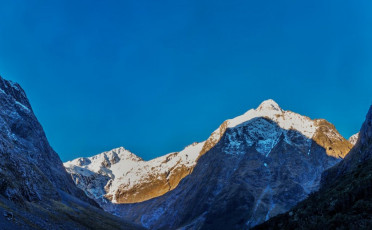
Viewed from the head of Gertrude Valley - Barrier Peak (2,039m) is left and Mount Crosscut (2,263m) right.
The following two days remained clear, enough time to allow us to do the other half of my original objective. Trouble was, our legs were so stiff after our first effort (and the Crosscut bluffs looked so steep), that we decided to leave that one for another time. As I pondered how I’m not as young as I used to be, I rationalised that the Darrans are not a place to take lightly.









